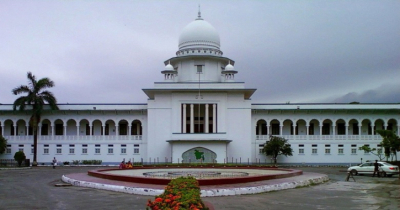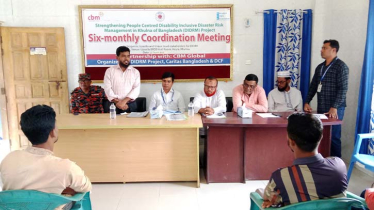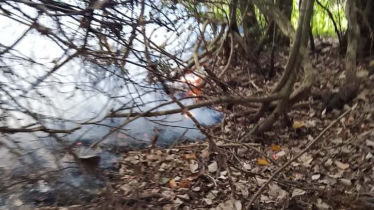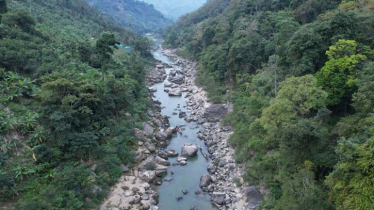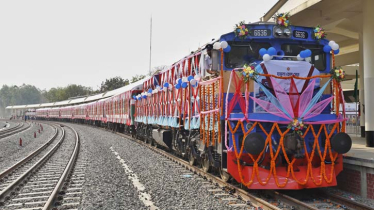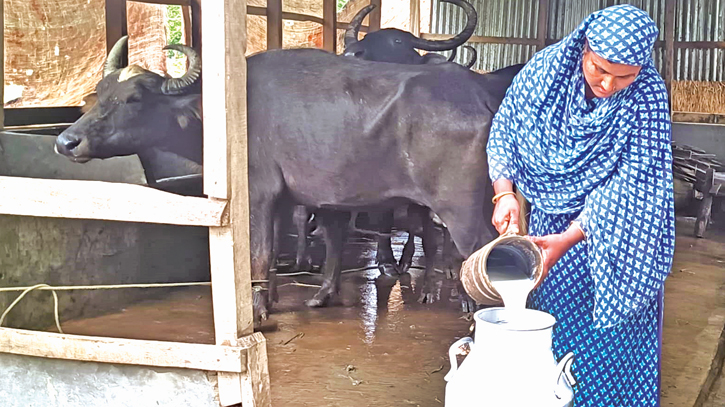
Rural women actively participate in this economically rewarding buffalo rearing practice, collaborating with men along the banks of the Meghna River in Noakhali, as a pathway towards achieving self-reliance. PHOTO : TDM
For more than a hundred years, thousands of buffaloes have been nurtured in remote grazing herds along the Meghna River's banks in Noakhali. Rural women participate actively in this commercially lucrative buffalo rearing practice, working alongside men. Amidst their various household duties, buffalo rearing has evolved into a self-sustaining enterprise, ushering in prosperity to a once underprivileged region.
For over a century, the banks of the Meghna River in Noakhali have been home to thriving buffalo herds, tended to by both rural women and men. Amidst their daily household duties, buffalo rearing has emerged as a means of achieving self-reliance, ushering prosperity into a once-struggling community. The cultivation of the superior Murrah buffalo breed presents a promising avenue for job creation and bolstering the incomes of marginalized groups.
In Subarnachar, Hatia, and Companyganj districts, numerous commercial buffalo farms have sprouted, catering to the nurturing of enhanced buffalo strains. Once limited to herds, the practice of rearing improved Murrah buffaloes has expanded into homes and farms. Given the comparative ease and heightened profitability of raising Murrah buffaloes, the southern upazilas of the district are witnessing a steady proliferation of buffalo farms. Notably, Noakhali's climate lends itself more favorably to buffalo rearing than any other region in Bangladesh.
Buffaloes exhibit greater disease resistance than cattle, boasting an impressively low mortality rate. Buffalo-derived meat and milk offer enhanced nutritional value and well-being compared to their beef and milk counterparts. This growing demand for buffalo milk and meat has led to a surge in their popularity. The cost of sustenance, shelter, and medical care for buffaloes is notably lower, ensuring that profits from sales surpass expenditure.
Zahura Khatun, a buffalo farmer in Harni Union of Hatia Upazila, attests to the profitability of buffalo farming over traditional cattle raising. Buffaloes, with their robust immune systems, alleviate concerns about disease management. Echoing this sentiment are Tajnahar Begum of Bagar Bazar in Char Amanullah Union and Tahmina Begum of Charbata Union, both concurring that buffalo rearing outstrips the gains from raising cows. The bountiful yield of buffalo milk commands a higher market price. While a liter of cow's milk fetches Tk 60, buffalo milk can be sold for Tk 100.
The Government's Palli Karma Sahajik Foundation (PKSF) has launched the SEP scheme, aimed at promoting the cultivation of superior buffalo breeds through training and loans. Operating at the grassroots level, the Sagarika Social Development Organization is instrumental in implementing this initiative.
Dr. Kazi Rafikuzzaman, Noakhali District Animal Resource Officer, observes, "Buffalo herds once thrived in the grazing lands along the Meghna's banks in Noakhali. However, their numbers are dwindling due to diminishing grazing areas. The significance of buffalo milk remains pronounced in meeting demand. To ensure local farmers benefit, the shift towards rearing Murrah buffaloes alongside native breeds is gaining traction."
TDM/SD

